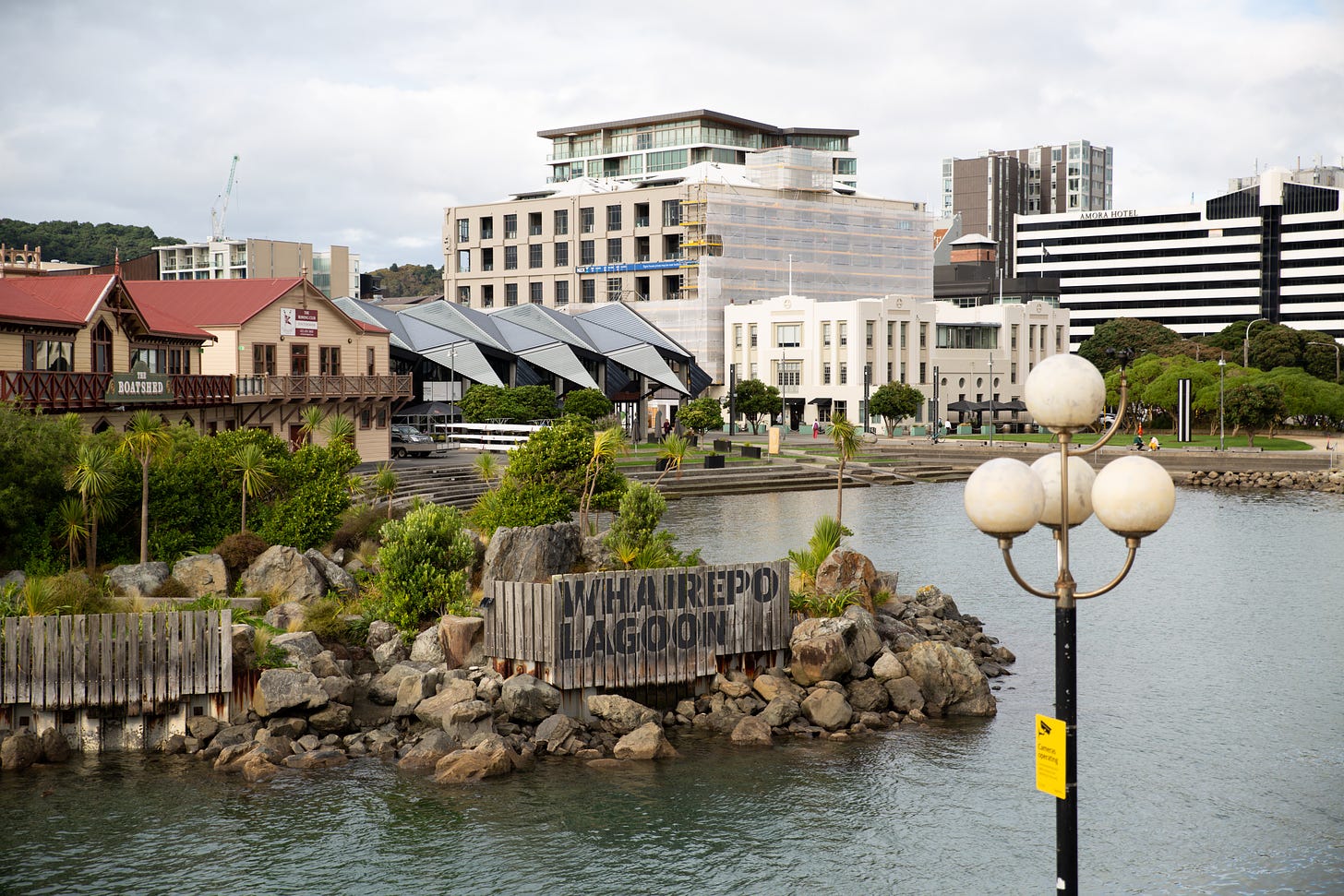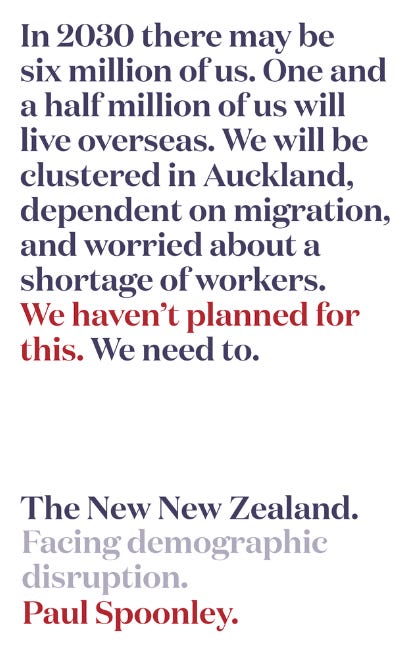Exploring the evolving immigration policies and Social Cohesion in New Zealand
I agree broadly with Minister Stanford's new approaches to immigration, and I also agree with Ricardo Mendez's analysis of the same policies. So let's review what's been going on over the weekend...
In recent news, Immigration Minister Erica Stanford has announced significant changes to the Accredited Employer Worker Visa (AEWV), citing concerns about the “sustainability” of current immigration numbers. This has sparked questions and discussions around the impact of immigration on various sectors, such as public transport and construction.
As an overseas-born New Zealand citizen, I identify with the migrant label. I have also been a migrant in the USA, Canada, and Spain because my mother was a diplomat for the Mexican government, and I moved around a lot when I was young. So, I feel relatively close to the idea of immigration and being an immigrant or migrant.
I have my own views on the responsibility of the migrant and the responsibility of the host country, and I have studied at length the tensions between Te Tiriti o Waitangi and immigration in New Zealand. So, I feel close and informed enough about this topic to share my perspective and continue studying it further for my Ph.D., which now will focus more specifically on the immigration policy dilemma when studying social cohesion in New Zealand.

What did Minister of Immigration Erica Stanford say on Sunday?
On Sunday, Immigration Minister Erica Stanford announced changes to the Accredited Employer Worker Visa (AEWV), claiming that our immigration numbers are “unsustainable.”
I was a little surprised by this. But once I listened to Bernard Hickey Kaka’s yesterday, it kind of helped explain what she was doing. And it actually makes sense, and I agree with the general direction of the changes. However, her rationale for filling the employment gaps in public transport and construction with people on the benefit doesn’t quite stack up for me.
She stated that last year, 20,000 people went on the benefit, while we brought in 52,000 low-skilled workers. I don’t think it’s a logical assumption to ask people who are on the benefit to fill the public transport and construction gaps. I think it won’t happen because it hasn’t happened this far. So what does she think will change today to think this is a reasonable thing to expect?
So, are any of those 20,000 people on the benefit going to apply for jobs as welders, fitters, turners, and bus and truck drivers? This is where it feels like the government starts to lose touch with reality. In Wellington specifically, we have had a bus driver shortage for a few years, so will this do the trick? I’ll bet you it won't.
Minister Stanford claims that "with the bus drivers and truck drivers, we took a really close look at that," Stanford said. "The advice from my officials was that we brought in 3000 truck drivers and almost 1000 bus drivers, and the agreement that we had with the sector at the time under the previous government was that we would put these truck drivers and bus drivers on a pathway to residence. It is time-limited to help you get over the critical shortages, and once those shortages are solved, then it is on you to be able to train and retain your own workers.”1
"That was the agreement, and the figures are such that we talked to the Minister of Transport and NZTA (New Zealand Transport Agency/Waka Kotahi), and they agreed that the numbers that have come in have eased those shortages. So it's now for the sector, and they always knew that."
To my pleasant surprise, it seems like National and the Greens agree on something: "The Green Party says the AEWV scheme—introduced by Labour after the borders reopened in the wake of the COVID-19 response—is a failure, and the coalition government should start over." Great! I think Minister Stanford is doing her best to review it all.
Ricardo Mendez March said: "Abolishing the requirement tying migrant workers to single employers was the single most meaningful change the government could make to address exploitation."
I couldn't agree more; that rule is a shitshow for immigrants, especially overqualified ones like migrants with a law, medicine, engineering, and science background. I see time and time again high-achieving, high-skill immigrants from Latin America having to return because they had to work for the same restaurant for three years. It doesn't make any sense.
Ricardo has sound critical thoughts about the immigration topic also regarding how unrealistic it is to expect immigrants to pass an English exam that most locals wouldn’t pass. I know this for a fact. I presented the TOEFL (Test of English as a Second Language) when I arrived because I come from a non-English speaking country. TOEFL has a 1-9 grading scale, 9 being expert. My English is as sound and expert as it gets, I lived in USA and Canada very young and if you hear me speak you would think I was raised in Ohio. I have no traces of an accent and you would never guess Spanish is my first language. I got a 7 on the TOEFL and got through by the skin of my teeth. Its a 4 hour exam that tests your reading, speaking, writing and listening comprehension, but its hard, very hard!
What do immigration and social cohesion have to do with each other?
Well, a lot. And I will unpack this much more in future articles, but in a nutshell…
In New Zealand Professor Paul Spoonley has studied and published much about immigration, demography and social cohesion. He has over 30 published articles about this topic, his first being published in 1978, titled Inciting Racial Disharmony in New Zealand, with his latest being published this year, titled: If Social Cohesion is the Answer, What Was the Question? Policy options for a diverse Aotearoa/New Zealand. Below a photo of the cover of his most recent Book.
What I have learnt so far is that globally, there is significant policy concern about the impacts of immigration on social cohesion. However, most research analyses the relationship between diversity and social cohesion, not between immigration and social cohesion, hence my PhD topic. You can see that in the titles above, Spoonley talks about diversity, demography and racism, not necessarily about immigration.
One of the issues of immigration policy is that we relate it to ethnicity, religion and race. Which is fundamentally problematic. It means that we perceive all brown, racially diverse population groups as a ‘migrant’ when many non-white bodies in New Zealand have been here for generations. Ministry of Social Development published a social inclusion rapid evidence review in 2020 that stated that a significant body of research demonstrates that it is not just objective indicators of deprivation and inequality that matter when thinking about social cohesion; it is the extent to which people perceive themselves (or their group) to be worse off than other groups.
Perceived relative deprivation has been shown to lead to feelings of anger and resentment, which, under certain circumstances, can lead to perceiving other groups as a threat, more negative attitudes towards certain outgroups, reduced support for affirmative action and immigration, and people’s susceptibility to terrorist recruitment.
And to refresh everybody's memory, here is what the two Coalition agreements say on Immigration…
…which I unpack a bit more in a previous post.
The two government coalition agreements (National & ACT - National & NZFirst) state the following about immigration:
National & ACT
The cap on the number of workers under the Recognised Seasonal Employer scheme should be increased to increase the flexibility of the quota allocation system.
Introduce a five-year, renewable parent category visa, conditional on covering healthcare costs, with consideration of a public healthcare levy.
Remove median wage requirements from Skilled Migrant Category visas.
Liberalize the rules to make it easier for family members of visa holders to work in New Zealand, beginning with Skilled Migrant Category visa holders.
National & NZFirst
Improve the Accredited Employer Work Visa to focus the immigration system on attracting the workers and skills New Zealand needs.
Ensure Immigration New Zealand is engaged in proper risk management and verification to ensure migrants fill genuine workforce needs.
Investigate establishing an “Essential Worker” workforce planning mechanism to better plan for long-term skill or labor shortages.
Commit to enforcement and action to ensure those found responsible for the abuse of migrant workers face appropriate consequences.
Address and provide solutions for the long-expressed concern of the OECD regarding the lack of focus on the New Zealand Immigration Policy
In conclusion
Its messy and not easy, but I get a feeling that Labour, Greens and National are actually more aligned on this that they care to admit. I also trust that Minister Sanford is doing the very best she can with a very complex and gnarly issue. I’m particular excited about the changes to the parent category, as somebody that would love to be able to bring my mom here legally so she is not aging alone in another country.
The changes to the Accredited Employer Worker Visa have sparked various opinions and discussions regarding immigration and its impact on different sectors in New Zealand. With a personal connection to immigration and a deep understanding of its complexities, I am embarking on a journey to explore the evolving immigration policies and their potential effects on social cohesion in New Zealand for my PhD research.
The insights gained from this exploration, coupled with the latest developments in immigration policy, promise an engaging and informative study of this pressing issue. The government's stance on immigration and the proposed changes in the work visa scheme have raised valid concerns and prompted a call for more comprehensive and effective solutions to address the genuine workforce needs and potential exploitation of migrant workers.
See ya next Tuesday!
https://www.rnz.co.nz/news/political/513686/immigration-tightening-might-only-be-temporary-erica-stanford




